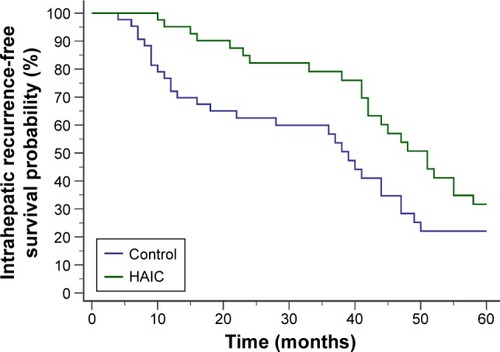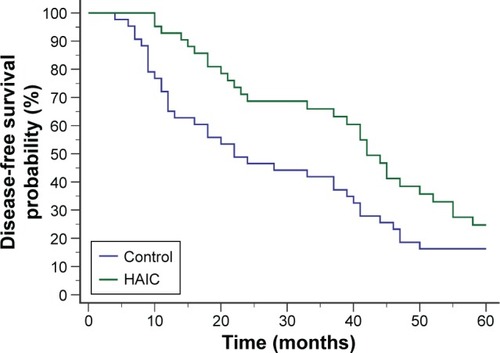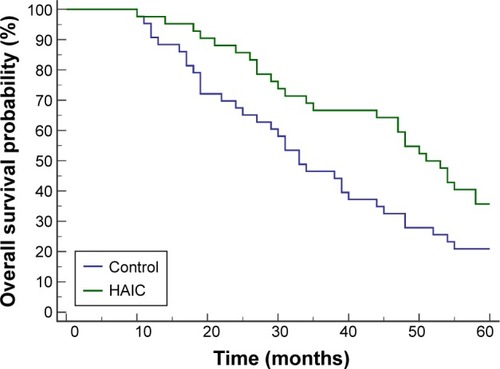Figures & data
Table 1 Baseline characteristics
Figure 1 Intrahepatic recurrence-free survival curves after radical hepatectomy.
Abbreviation: HAIC, hepatic artery-infusion chemotherapy.

Figure 2 Disease-free survival curves after radical hepatectomy.
Abbreviation: HAIC, hepatic artery-infusion chemotherapy.

Figure 3 Overall survival curves after radical hepatectomy.
Abbreviation: HAIC, hepatic artery-infusion chemotherapy.

